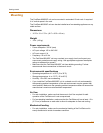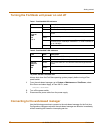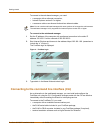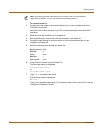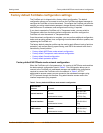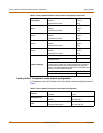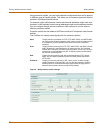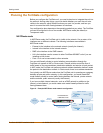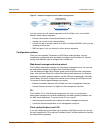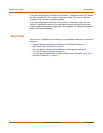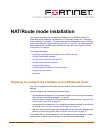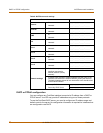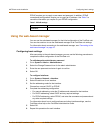
22 01-28006-0024-20041026 Fortinet Inc.
Factory default protection profiles Getting started
Using protection profiles, you can build protection configurations that can be applied
to different types of firewall policies. This allows you to customize types and levels of
protection for different firewall policies.
For example, while traffic between internal and external addresses might need strict
protection, traffic between trusted internal addresses might need moderate protection.
You can configure firewall policies for different traffic services to use the same or
different protection profiles.
Protection profiles can be added to NAT/Route mode and Transparent mode firewall
policies.
The FortiGate unit comes preconfigured with four protection profiles.
Figure 5: Web protection profile settings
Strict To apply maximum protection to HTTP, FTP, IMAP, POP3, and SMTP traffic.
You may not use the strict protection profile under normal circumstances but
it is available if you have problems with viruses and require maximum
screening.
Scan To apply antivirus scanning to HTTP, FTP, IMAP, POP3, and SMTP content
traffic. Quarantine is also selected for all content services. On FortiGate
models with a hard drive, if antivirus scanning finds a virus in a file, the file is
quarantined on the FortiGate local disk. If required, system administrators
can recover quarantined files.
Web To apply antivirus scanning and web content blocking to HTTP content
traffic. You can add this protection profile to firewall policies that control
HTTP traffic.
Unfiltered To apply no scanning, blocking or IPS. Use if you do not want to apply
content protection to content traffic. You can add this protection profile to
firewall policies for connections between highly trusted or highly secure
networks where content does not need to be protected.




